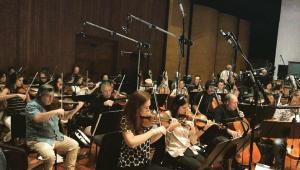Color Commentary

More and more manufacturers are putting detailed color temperature adjustments in their on-screen user menus. By this I don’t mean a simple selection options such as Cool, Middle, and Warm. We've seen these on sets for years, and these setting are usually wrong if you want to see programming the way the content provider intended (though manufacturers are doing a better job getting close to the correct standards today than in the past). Instead, I mean controls that provide the ability to adjust red, green, and blue to alter the grayscale in almost infinite ways. ("Grayscale" is the term used to describe the trend of the color temperature across the entire brightness range)
But there are only one or two correct ways to do this. The first is to dial in a color temperature of 6500K, or more precisely a specific white point called D6500, from the darkest grays to the brightest whites. D6500 is the correct setting for color programming—the white point for which the material was produced. But a color temperature of 5500K is actually more appropriate for black and white material. If you're a regular viewer of classic B&W films you might want to consider that as an alternate setting.
I've never been entirely comfortable with having these adjustments in the user menus. It does make calibration easier—no having to jump in and out of a service menu to make sure your settings "stick"—but if you don't have the correct test tools you can seriously mess up the picture in setting the controls by eye. (Fortunately it's not hard to reset them).
For this reason, most manufacturers still put these adjustments in a code-secured service menu. Most sets have such service adjustments, but they aren't always useful to aftermarket calibrators. Sharp has been the most visible no- show with respect to providing readily usable gray scale adjustments. While its service menus have such controls, they can only be set properly at the factory, using a specialized computer program.
Some of Samsung's rear projection sets are also hard to calibrate, but for another reason. They provide extremely flexible calibration menus, but they are difficult to use properly. (Samsung's recent flat panels provide more typical and easy to use—but less flexible—controls).
But in Sharp's case this is about to change. On its upcoming 2008 sets (but none of their sets currently on the market) Sharp plans to provide a special calibration menu (code-protected, but separate from the usual factory menu) to make life easier for calibrators (and reviewers!)
It’s why they are doing this that's the interesting part. Best Buy is one of Sharp's largest vendors. And Best Buy is getting into the calibration business. Don't you just love it when a plan comes together!
- Log in or register to post comments































































